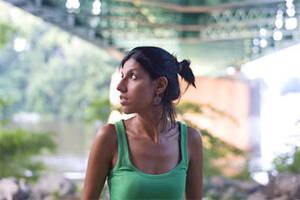Manjari Sharma is a photographer born and raised in Mumbai, India and based in Brooklyn, New York. Rooted in the study of relationships and personal mythology, since it’s inception Manjari’s work has been recognized as walking the line of fine art and traditional portraiture. Manjari‘s work has been showcased in several group and solo exhibitions both in the US and internationally and she's been invited to speak at the School of Visual arts and the Rubin Museum of Art in New York City. Manjari was chosen as an honorable mention for the Santa Fe Prize in 2012, her work selected by Review Santa Fe and featured by the Critical mass top 50. Manjari has been featured in various magazines print and online. Her works have appeared with Forbes India Magazine, Vogue India, Geo Magazine, America Online. She has been commisioned to work with advertising agencies such as JWT and Contract, India and has had features and interviews with New York Times, lens blog, Wired Raw File Nikon Asia, NPR, Time, PDN, Huffington Post, CNBC, Mumbai, The Times of India group and Leica, China. Before moving to the U.S. in 2001 Manjari worked for the national news daily of her country, The Times of India. Manjari has also worked as a staff photojournalist with the leading south asian photography magazine, Better Photography. She holds a bachelors degree in Visual Communication from S.N.D.T University, Mumbai and a Bachelor of Fine Arts in Still Photography from Columbus College of Art and Design in Columbus, Ohio.
